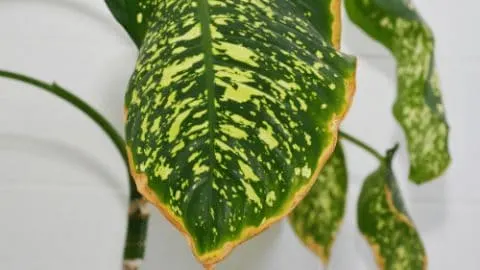My Dieffenbachia Leaves are turning yellow; why is that? I have been there, trust me. While they are easy to care for, some mistakes make them simply produce yellow leaves and fall apart.
Dieffenbachia, or Dumb cane, is a house plant known for its large tropical leaves. Its foliage is elliptical and large and can grow up to 12 inches long (30cm).
It can grow 6 feet high (182 cm) and 3 feet wide (91 cm). It is native to Mexico, the West Indies, and Argentina.
If the care is not difficult, why do the leaves often discolor, and why have I lost several plants due to improper care?
Why Are Dieffenbachia Leaves Turning Yellow?
Dieffenbachia leaves turn yellow because of over- or underwatering. Too much sunlight can also be the culprit, as can a cold climate. There can also be issues with nutrient deficiency or root system challenges that will cause yellowing leaves. A pest infestation will also turn leaves yellow.
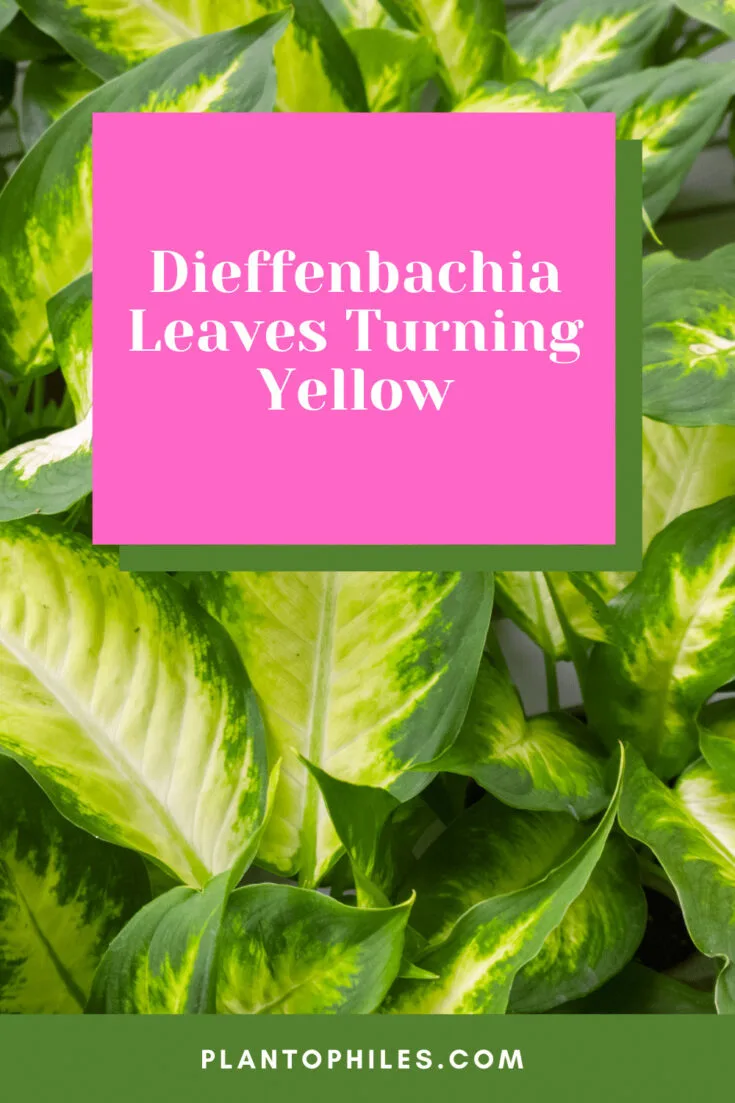
Dieffenbachia Leaves Turning Yellow
Table of Contents
6 Reasons For Dieffenbachia Yellow Leaves
1. Over or under watering
Sometimes if a Dieffenbachia is over or underwatered, its leaves will turn yellow and droop. This is an easy fix and usually an easy-to-spot issue.
If the soil is soaked or not draining, there is a good chance the plant has been overwatered. Let the soil dry out before watering it again. When you water your Dieffenbachia, check the soil first.
It is time to water if the soil is dry to your first knuckle. Any wetter than that, and you will be overwatering.
If the leaves droop and turn yellow and the soil dries, you are likely under-watering it.
When the soil is dry to your first knuckle, water it from the top until water pours through the draining holes in the bottom. This will ensure the plant is getting the appropriate amount of water.

Dieffenbachia leaves are turning yellow because of over-or underwatering
What is the best planting system for Dieffenbachia to Prevent yellowing Leaves?
A Dieffenbachia must have a well-draining pot to live in to prevent its roots from sitting in too much water. Planting it in well-draining soil with perlite is a good idea to prevent root rot.
Dieffenbachias are also very susceptible to being root-bound. They have a complex root system, and the plant will suffer when it gets too compressed.
If the roots get too tight, the plant will not be able to receive the proper nutrients from its water and soil which will prevent the water from draining properly. If the roots come out of the draining holes, it is time to transplant the Dieffenbachia.
2. Too Much Sunlight
Dieffenbachias thrive in partially shady and indirect light. They do well in an east-facing window or a window that does not get much direct light. Too much direct sunlight can turn the leaves yellow and cause problems.
They are native to jungle-like environments where the other plants block them from direct sunlight. They need several hours of indirect sunlight a day. Ensure your plant is away from the window if you don’t have a screen or something to shield it from the sun.
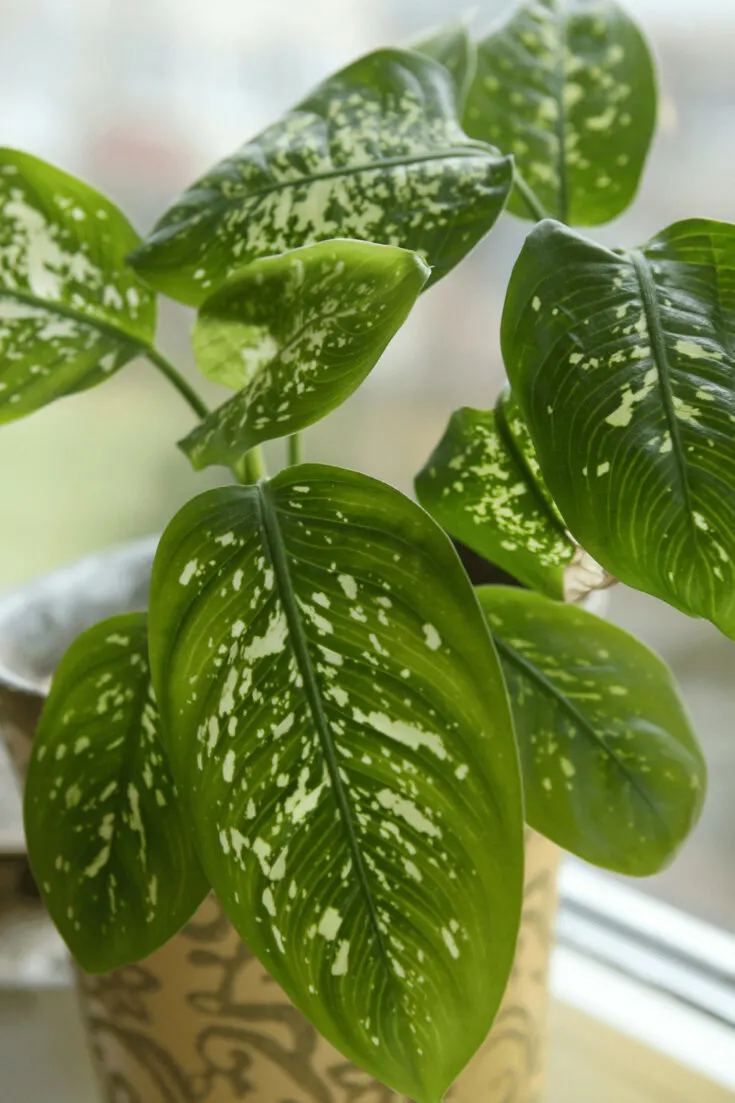
Yellow dieffenbachia leaves can be a result of too much sunlight
3. Cold Climate
If your Dieffenbachia is too cold, it will likely get yellow leaves that droop. Dieffenbachias like the temperature to be between 65 and 75 degrees Fahrenheit (18 – 24 degrees Celsius).
They should also not be near vents that blow cool air or fans, which can cause plant distress.
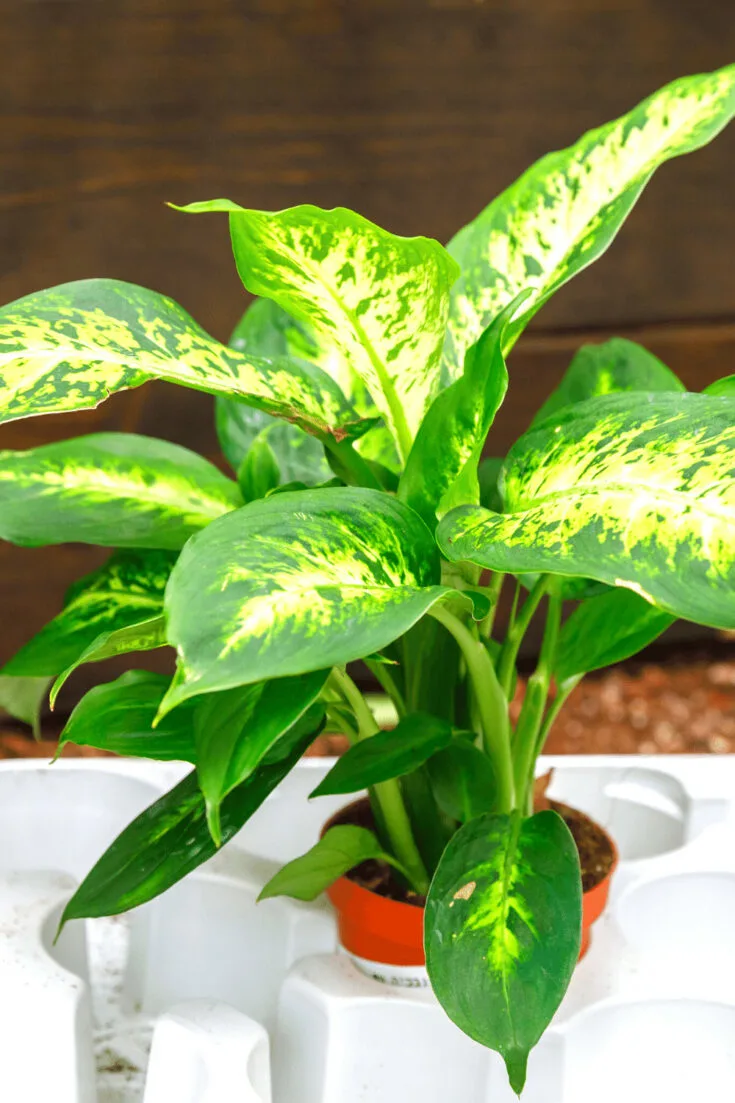
If the temperature is too low, it can cause yellow leaves on Dieffenbachia plants
4. Nutrient Deficiencies
Dieffenbachia needs proper nutrients, or its leaves will turn yellow, and the plant will ultimately die.
As mentioned above, they will have difficulty if they are root bound or underwatered. They also need nutrient-dense soil and regular fertilizer to keep them healthy.
They thrive in a 1:1:1 mixture of soil, peat moss, and perlite, although they can also do well in just straight peat moss.
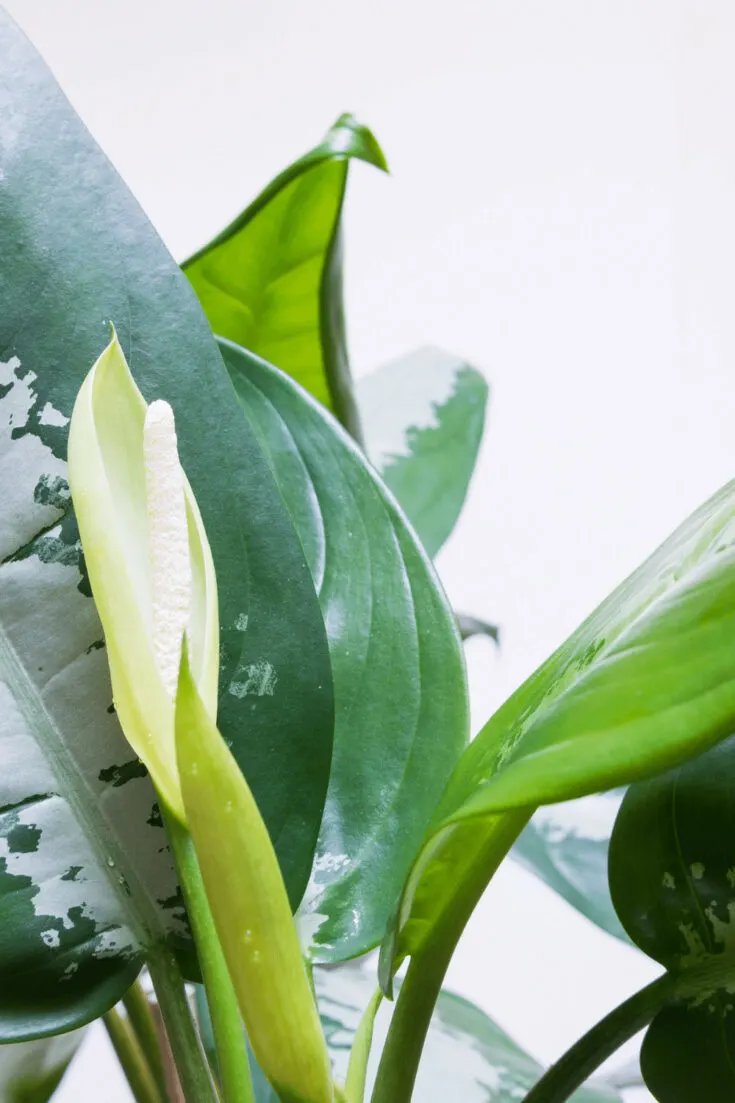
Regular fertilization ensures that leaves are not getting yellow on a Dieffenbachia
What type of fertilizer should I use for a Dieffenbachia?
I use a complete fertilizer such as 20:20:20 every 4 to 6 weeks during the summer months. In the winter when the plant is dormant,
I fertilize every 8 to 10 weeks. I also use ground eggshells in my dieffenbachia soil as a yearly treat for them. Using eggshells too often can throw the soil’s pH balance off, so I make sure only to do it once every 12 months.
5. Pest Infestation
Most indoor plants are susceptible to pests during their lives. Mites or aphids are the most common pest in Dieffenbachias, although I have found mealybugs as well.
If your plant gets infested, the leaves will turn yellow, and the plant will look as though it is in distress.
To determine if the plant is infested, check the underside of the leaves for a webby material. This is a sure sign that the plant has spider mites.
You have a mealybug infestation if there is a cottony mass on the stems or leaves. Aphids can be seen on the plant’s large leaves.
I use a mixture of insecticidal soap and water to get rid of pests. Another option for dealing with a pest infestation is to rub the leaves with neem oil. To get rid of the webs from a mite infestation, a cotton swab doused in alcohol will do the trick.
6. Diseases
Diseases on plants can be tricky. They are even harder to identify than pests. Some of the diseases I had on my Dieffenbachia plants are root rot. Phytophthora causes most root rot. This is a sort of water mold.
When you overwater Dieffenbachias with dense soil and often no drainage holes, the soil stays wet and soggy.
The roots need airflow. If they have insufficient oxygen due to waterlogging, they start to rot. Roots become mushy and soft.
They fall off when touched. The best remedy here is to exchange the soil and disinfect the pot. Cut off diseases and soft roots. Wash the remaining roots under running water.
Other common diseases are rust, caused by fungus, and powdery mildew. The best here is using a fungicide as well as copper spray.
I also had a case of TMV, or Tobacco Mosaic Virus. It was really hard to spot as it was on my Dieffenbachia Reflector plant. The leaves are spotted anyways. But the virus added an unnatural mosaic-like structure of bright yellow discoloration.
With diseases, it is the same as with plant pests. Try to spot and identify them as early as possible and quarantine infected plants asap.
Conclusion About Dieffenbachia Leaves Turning Yellow
Dieffenbachias are ornamental and easy to care for. They will stay green and healthy if you follow the steps above. I have listed the four most common reasons why the leaves of a dieffenbachia turn yellow.
Identifying the root cause is crucial to counter-yellowing, as nobody likes a plant with yellow leaves when they are supposed to look green or any other color apart from yellow.
Happy indoor gardening!

Daniel has been a plant enthusiast for over 20 years. He owns hundreds of houseplants and prepares for the chili growing seasons yearly with great anticipation. His favorite plants are plant species in the Araceae family, such as Monstera, Philodendron, and Anthurium. He also loves gardening and is growing hot peppers, tomatoes, and many more vegetables.

